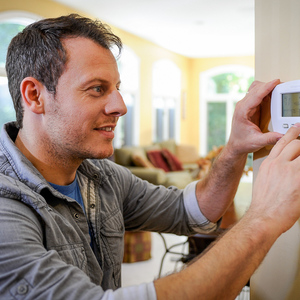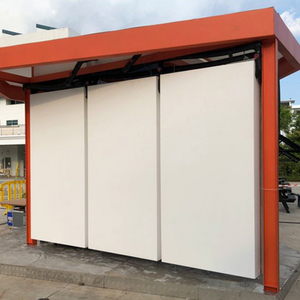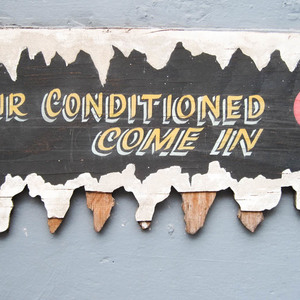
Image Credit: Aurelien Guichart via Flickr
The planet’s growing appetite for air conditioning and refrigeration is creating a surge in energy consumption that by mid-century will overtake the amount of power used for heating while making global warming worse, a published report says.
In a series of news stories, The Guardian reports that the demand for cooling is going up steeply as a result of rising global temperatures and an expanding middle class that can afford to stay comfortable.
By the year 2100, power consumption for cooling is expected to be 33 times what it is now. Already, the U.S., with 4.5% of the world’s population, uses more energy for air conditioning that the rest of the world combined, a related report said. The U.S. (population 318 million) uses more energy for cooling than Africa (with a population of more than 1 billion) uses for everything.
“Cold has become a hugely significant — yet almost unsung — part of our energy footprint,” said Nick Winser, who heads a technology and innovation center in the UK. “We know the energy landscape is going to be very different in the near future. We need to see cold’s place in it; start thinking of heat and cold as parts of one integrated system.”
Staying cool is a hot business, and full or risks
Citing Losing Our Cool, a book by Stan Cox, the report notes the demand for air conditioners is surging everywhere, but particularly in Asia. Chinese shoppers took home 50 million air conditioning units in 2010, and the proportion of Chinese homes with refrigerators went from just 7% in 1995 to 95% in 2007.
It’s not just AC units and the kitchen fridge: many medicines must be chilled, and a variety of industries, such as steel, chemicals, and plastics, all rely on some type of refrigeration. Huge data centers that handle internet traffic and cloud computing must be kept refrigerated.
Those trucks that haul refrigerated food? “According to a report by the energy consultancy E4tech,” The Guardian reported, “the small diesel-powered fridges on food trailers emit nearly 30 times more harmful particulate matter and six times more nitrogen oxides than the engine that powers the trucks.
Mechanical refrigeration needs both electricity and chemical refrigerants with a high global warming potential. Three-quarters of the electricity used for air conditioning and refrigeration is generated by fossil fuels, the report says, and the hydrofluorocarbon (HFC) refrigerants that are commonly used are 4,000 times more potent as greenhouse gas than carbon dioxide. Refrigerant leaks and energy use for cooling already account for about 10% of global CO2 emissions already.
Rising temperatures globally are making the problem worse. Parts of the Persian Gulf will be too hot for human habitation by the end of the century if carbon dioxide emissions continue at their current rate, the Associated Press says. The Greenland ice sheet is now one of the biggest chunks of melting ice on the planet, The New York Times says in an article.
Better approaches are possible
Refrigeration has a crucial role to play in the world’s supply of food, a third of which is now wasted after harvest, the article said. Cutting food waste by half would be enough to feed 800 million people, but almost all of the money spent on agriculture research is about increasing yields, not making refrigeration more efficient and more available.
More research and applied research would help. Better building designs, for example, would reduce cooling loads and cut the need for air conditioning. Toby Peters, visiting professor of power and the cold economy at the University of Birmingham, suggested cheaper off-peak renewable energy could be used to make ice at night and cool buildings the next day. “We store heat,” he said. “Why aren’t we storing cold?”
(That’s exactly the approach adopted experimentally in Boothbay Harbor, Maine, where thermal energy storage units called “Ice Bears” produce ice at night, and release the cold during the day, according to The Boothbay Register.)
Other promising ideas include finding a way to capture the cold used to transport liquified natural gas, currently dumped at sea.
“We just need to think about cold differently,” Peters told The Guardian. “Because solving cold, really doing it smarter, would actually do more to help the world meet its climate-change targets than almost anything else I can think of.”
Weekly Newsletter
Get building science and energy efficiency advice, plus special offers, in your inbox.















5 Comments
Make Ice at Night and Cool City During Day
A large part of downtown Chicago has cooled by ice made at night for 20 years. See:
http://enwavechicago.com/how-district-cooling-works/system-operation/
I have been inside two of the ice locations for work. Very cool (pun intended).
Downtown Hartford, CT has similarly cooled with chilled water made at night for 45 years. See:
http://www.hartfordsteam.com/about.htm
Also, a number of large college campuses store cooling via ice or chilled water made at night:
http://www.districtenergy.org/assets/pdfs/ORNL-DOE_2002_data/Table4CoolingData.pdf
Two U.S. airports store cooling. One via ice and one via chilled water:
http://www.districtenergy.org/assets/pdfs/ORNL-DOE_2002_data/AirportTable4.pdf
Naw, make power during the day...
...when the local PV resource is available, with a smaller bit of storage (thermal, mechanical, or chemical) to cover the late-day cooling load peak.
Ice storage makes sense using the 20th century grid model of large inflexible baseload generators cranking all night, but that model should be going away by mid-century with smarter grids and greater quantities of distributed generation (all types) and more flexible loads. In most places ice storage is really still the right option for larger scale cooling, but at the financial learning rate of PV and wind the capital cost of thermal storage in ice is going to look a lot less attractive in very short years.
If you want a time lag...
It's possible to use PV power from 10:00 a.m. to 4:00 p.m. to run a chiller that circulates cool water through a concrete slab. The slab provides a time lag into the early evening hours.
Like all ideas that incorporate thermal mass, however, this method doesn't handle sudden weather changes very well. And like all radiant cooling schemes, you need to incorporate dehumidification to avoid condensation problems on the floor. Slippery floors are no good.
Managing Building Heat Loads
Apparently, people want to control temperature and humidity for their comfort, well being, and other purposes. The dialogue tends to rally the troops for greener and more efficient ways to achieve cooling when needed. We don't mention (because it goes without saying) that we're assuming the building is properly sealed and insulated and that roof overhangs are judicially used where available. Good.
We also don't mention the management of the heat load itself. Well, we assume, of course, that shade trees are used where available. Maybe even white roofs. But at some point, we tend to accept the heat load as a given and focus on overcoming it all.
To me, it's wasteful to think about using valuable PV power to overcome building heat when the building didn't need to heat so much in the first place. (The same could be said of automobile interiors or truck trailer interiors). We should see at the top of our idea list means for more effectively managing solar heat gain. It's easy to do and is cost effective.
Looking at the photo Scott provided, notice how the internal shades are drawn. Happily, the side facing the sun is white and therefore partly reflective. Think of how much less heat gain would occur if direct sunlight could be intercepted before it penetrated the glass.
Some time prior to the year 2100 and the 33x for cooling, we will no longer accept the dual practice of needlessly allowing a building to heat and then accepting praise for heroically overcoming that heat.
WD
I agree. While there are lots of circumstances where some cooling loads are unavoidable, you only have to look at places like Vegas or LA to see that the buildings generally make no concessions to the climate and rely on mechanical cooling to make up for the architectural shortcomings.
Log in or create an account to post a comment.
Sign up Log in